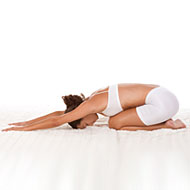What are the different pranayama breathing techniques?
In yoga, pranayama is the science of breath control. Without breath, there is no life, and starting from the first inhalation at birth and ending with the final exhalation at death, there is always breath in our bodies. While Western science does not place much emphasis on breathing, except perhaps that it is important for life, pranayama is the basis of a lot of yoga.
In this article, we will talk about the different kinds of pranayama breathing techniques there are.
Pranayama breathing techniques
Dirga Pranayama
This is the basic technique where proper breathing is taught. Most of us breathe shallowly, and use only a very small portion of our lungs.
Dirga pranayama teaches us to use the full capacity of our lungs. Dirga pranayama is deep breathing, but breathing in a certain way. You first breathe so that your stomach fills with air, then your chest, till finally it seems like your shoulder blades are being displaced by the air you are breathing in. Dirga Pranayama is akin to filling up and emptying a vessel with water and replenishes the body and soul.
Nadi Shodhana
Nadi shodhana means sweet breath or cleansing breath. It is very simple; you cover your right nostril using the thumb of your right hand and take deep breaths with the left nostril. In the pause between inhalation and exhalation, you release the right nostril and close your left nostril with the ring finger of your right hand. Once you finish exhaling fully, you inhale through the same nostril. In the pause between the inhalation and exhalation, you close your right nostril with your thumb while releasing the left nostril.
This is repeated a few times. This exercise is called the cleansing breath because it is supposed to infuse oxygen into the blood and flush it of all toxins.
Ujjayi Pranayama
While the above exercises are relatively easy, the ujjayi pranayama is complicated. In ujjayi pranayama, you take in long deep breaths, but while exhaling you constrict your throat so that there is some resistance to the free movement of air. You can do this for the inhalation too, which is more difficult but also more beneficial.
The resistance created to the flow of air will strengthen the lungs. Also, the sound created during this exercise will calm the body.
Kumbhaka
Kumbhaka is an advanced form of the same pranayama where the person holds their breath either at the end of each inhalation, exhalation, or both. Kumbhaka should never be practiced without supervision from a learned practitioner. The benefit of kumbhaka is that it amplifies any benefit that you accrue from the pranayama that you are doing this with.
The idea behind all pranayama exercises is that you should slow down your breathing. There should be no fast breathing and all breathing should be quiet breathing. Except for the ujjayi pranayama, there is no sound involved in any other technique. Even in this method, the sound is very low and soft.Read more articles from the Yoga Breathing (Pranayama) Category.

 Find Pose
Find Pose

